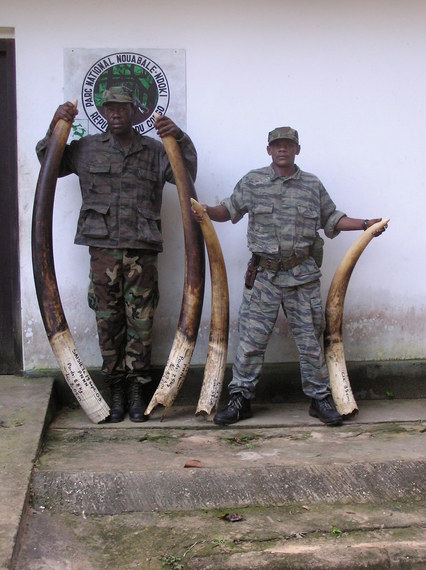World leaders are gathered again in New York for the annual session of the United Nations General Assembly to discuss some of the greatest crises challenging the global community today. They have already taken up the issues of climate change, the terror threat posed by the Islamic State, and the devastating outbreak of the Ebola virus in West Africa.
Government leaders are also reviewing the work completed by the General Assembly earlier this year on the new set of global development goals that will succeed the Millennium Development Goals. Included among them are two critical targets on preventing the extinction of threatened species and taking urgent action to halt poaching and trafficking and demand and supply of illegal wildlife products.
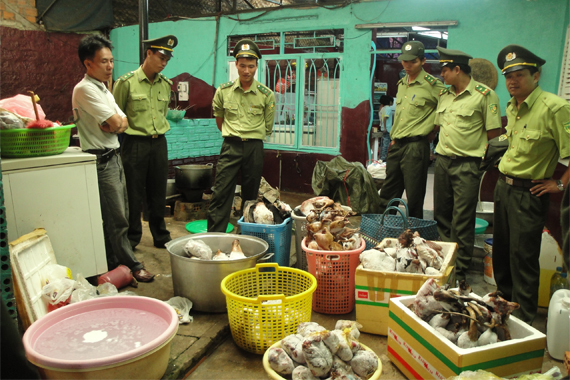
Forest Protection Department authorities examine confiscated wildlife products. CREDIT: © WCS Vietnam.
On Friday, Germany and Gabon led a high level event to discuss illegal wildlife trafficking in an effort to keep the issue high on the global political agenda. The trafficking in wildlife and their parts is a criminal international trade worth an estimated $20 billion a year.
The soaring demand for products derived from wildlife has pushed several iconic species --including elephants, rhinos, and tigers, as well as many lesser known species -- toward the precipice of extinction. This is a global crisis for both wildlife and people, particularly local communities; it undermines equality within and among nations, sustainable consumption and production, the health of ecosystems, human health, and social stability.
Poaching and the illegal trade in wildlife negatively impacts: the resilience of ecosystems; human security across countries and regions; and national wealth and the ability of countries to generate employment, reduce poverty through tourism, and provide dependable livelihoods through community-based natural resource management.
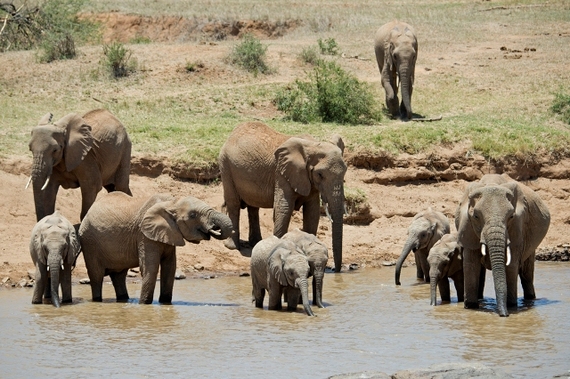
Tourists visiting parks to view elephants are vital to the economies of Eastern and Southern Africa, with tourism dollars responsible for more than 11 percent of GDP in countries such as Kenya, Tanzania and Zimbabwe. CREDIT: Julie Larsen Maher ©WCS.
To take but one example, the loss of elephants and rhinos threatens tourism jobs and livelihoods. Tourists visiting parks to view elephants are vital to the economies of Eastern and Southern Africa, with tourism dollars responsible for more than 11 percent of GDP in countries such as Kenya, Tanzania and Zimbabwe. Without elephants, these tourism enterprises would collapse.
The recent entrance of armed militia groups -- including the Lord's Resistance Army and the Janjaweed -- into the international wildlife trade has generated combined revenues of between $4-12 million for criminal activities, while feeding corruption and instability and undermining national law enforcement efforts.
But if ivory commands a price-per-weight value higher than gold as a commodity, that price pales in comparison to the cost of this trade to wildlife populations. The most recent accounting put the loss of African elephants at 100,000 over the past three years. That translates to approximately 96 elephants a day, with only 400,000 remaining in the wild across all of Africa.
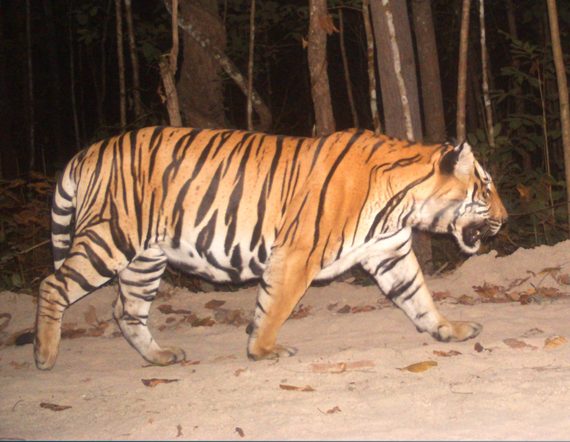
Highly trained ranger patrol teams are helping to protect the remaining tigers in Thailand's Huai Kha Khaeng Wildlife Sanctuary. CREDIT: © WCS Asia Program.
Fewer than 30,000 wild rhinos survive. A mere 3,200 wild tigers survive in the forests of Asia, including only 1,000 breeding females. And populations of many lesser known species, from Africa to Asia and Latin America, are also being depopulated by poaching and illegal trade -- all of which are fueled by greed, weak governance and enforcement, and corruption along the entire trade chain.
It is clear that the trafficking of wildlife requires a global response -- one that fits well within the governance regime of the UN General Assembly. In the face of a growing assault upon the cultural and natural heritage of nations across the globe, a growing number of UN Member States have called for urgent action to end the poaching and trafficking of wildlife. For many of these countries, the elephants, rhinos, tigers and other species are not only their natural heritage, but their very patrimony.
A major challenge to bringing a halt to trafficking, in addition to rampant corruption, is the absence of adequate law enforcement across the trade chain: on the ground where the killing is taking place, through the transit States, and on to the final destination consumer markets.
To counter these trends of recent years, WCS and its conservation partners, along with range State governments, the U.S. government, the European Union and its Member States and others, are working in concert toward the realization of three central goals: 1) Stopping the killing; 2) Stopping the trafficking; and 3) Stopping the demand.
Just this week, the Clinton Global Initiative renewed its commitment to the fight against wildlife trafficking, expanding a coalition of countries created one year ago that together pledged both financial and human support for stricter enforcement, expanded interdiction actions, and media-based education efforts in Asia (and wherever demand for ivory and other products is high).The coming together of the United Nations Member States this week presents an ideal moment to recognize the interconnectedness of these actions to reduce, and ultimately halt, illegal wildlife trade .
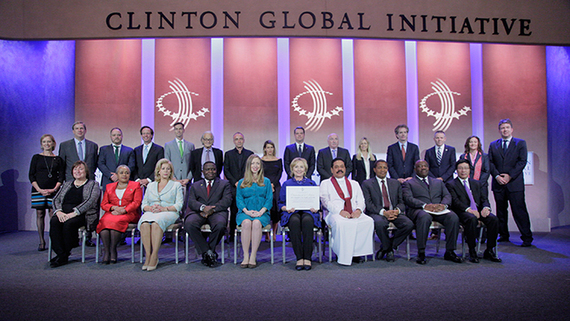
This week, the Clinton Global Initiative renewed its commitment to the fight against wildlife trafficking, expanding a coalition of countries created one year ago. Credit: Adam Schultz © Clinton Global Initiative.
Governments are collaborating through existing treaties, such as the Convention on International Trade in Endangered Species, but much more is needed in terms of anti-corruption, anti-money laundering, and enforcement enhancement, if we are to end this scourge. Wildlife trafficking must be treated with the same seriousness as other transnational organized crime. Continued leadership from the UN on this issue is essential to the protection of iconic species and the welfare of people whose livelihoods and wellbeing depend on them.

